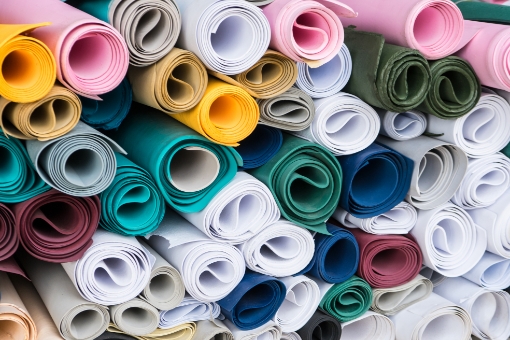Serving multiple industries and product requirements, BGF Rubber’s repertoire includes a wide-ranging assortment of rubber compound formulations, based on the different types of rubber, such as NR, EPDM, SBR, NBR, BR, IR, CR, and Silicon (Q). For “extreme” operating conditions, we use FKM as well.
To maximize performance, our specialists innovate promptly, while also improving existing solutions using a wide range of highly qualitative raw and work materials for high-grade rubber compound formulations.
At BGF Rubber, we use ultra-modern technology including a fully updated Zeppelin weighing system that is used for weighing and feeding equipment. It is a completely computerised system that ensures the stability of mechanical and physical properties of the mixture used in every batch of products we create. To guarantee good dispersion and distribution for each batch that we produce, we use automation for the weighing of chemicals and to control the mixing cycle, thus eliminating variations. We also use high-quality German equipment with interlocking rotor geometry for mixing the rubber that ensures the highest efficiency and quality of the product.
Every product is throughly tested for density and hardness before delivery, using advanced rheometers in order to get best results. We can also offer several other testing types, based on customer demands.
For optimal scope and usability, we supply our rubber compounds in the form of endless-strips, ranging from 40-200 mm in width and 5-12 mm in depth.
Types of rubber manufactured (general characteristic)
| Rubber type | Type code | Description | Operating temperature range (оС) |
| Chloroprene | CR | It is one of the most versatile types of rubber with widespread use; weatherproof, resistant to sunlight, ozone, resistant to contact with oils and a wide range of chemicals.
It has high physical strength and fire resistance. |
From -55 to +125 |
| Ethylene propylene | EPDM, EPR | It is also one of the most popular types of rubber, electrical and weather resistant, resistant to ozone, sunlight, alkali acids and solvents at low concentration; food grade approved; widely used in the automotive industry due to its resistance to hydraulic fluids. | From -55 to +150 |
| Fluoride | FPM, FKM, VITON | It is a unique type of rubber with exceptional resistance to a wide range of chemicals, including acids, alkalis and high concentration solvents, gasolines, diesel fuel and mineral oils. It is characterized with high heat resistance and gas tightness, has high resistance to ozone. | From -40 to +275 |
| Silicone fluoride | FVMQ | It combines the advantages of fluoride and silicone rubber. With high resistance to a wide range of chemically active substances, including acids, alkalis, solvents, gasoline and diesel fuel, transformer oil and other types of mineral oils, it is characterized with unique elasticity properties even at extremely low and high temperatures. | From -60 to +200 |
| Silicone | VMQ, MQ, PVMQ | It is characterized with resistance to extremely low and high temperatures; resistant to a wide range of chemicals and solvents; food and medical grade approved; resistant to aging in the air, ozone aging and direct sunlight. It has the highest dielectric characteristics among all known rubbers.
The most important characteristic of silicones is their unique elasticity properties. |
From -60 to +315 |
| Natural rubber | NR | High elasticity and abrasion resistance. High strength characteristics. Food and medical grade approved. | From -50 to +70 |
| Nitrile butadiene | NBR | Resistant to gasoline, diesel and mineral oils. Significantly cheaper than other oil and gasoline resistant rubber. | From -55 to +135 |
| Hydrogenated Nitrile Butadiene | HNBR | It has the same properties as nitrile butadiene rubber, but the upper limit of the operating temperature range is higher. Somewhat higher elastic qualities. Increased resistance to aging in the air. | From -55 to +165 |

